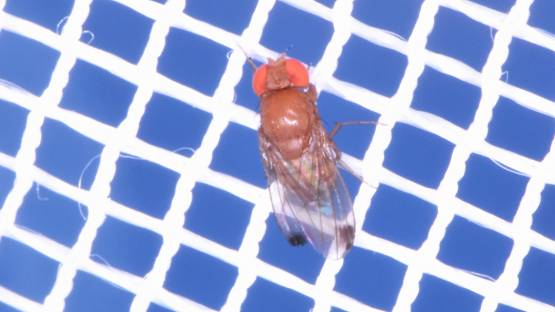Taking flight between rows of crops inside a greenhouse, the Spotted Wing Drosophila (SWD), Drosophila suzukii, lands on blossoming berries, infesting the fresh produce and causing irreparable destruction. Unlike other Drosophilidae that thrive on harvested and decaying fruits, SWD has a penchant for small fruits – blueberries, strawberries and raspberries – and stone fruits, such as cherries, in both open fields and confined greenhouses. A pest native to Southeast Asia, SWD have landed across Europe, the Americas and, most recently, in parts of Africa. Financial losses linked to the infestation of the unruly pest could reach millions of dollars a year – more than US $500 million in the United States of America, alone – according to a study published in the journal Insects.
The IAEA, in cooperation with the Food and Agriculture Organization of the United Nations (FAO), has the expertise and historical success in implementing the sterile insect technique (SIT) to suppress or eradicate insect pests, like the Mediterranean fruit fly, screwworm flies, tsetse flies and various moths. Given the threat of SWD to fruit production around the world, several countries approached the FAO and IAEA to assess the potential of the SIT to suppress SWD in confined production systems, such as greenhouses.
“To date, there are no environment-friendly treatments developed to supress this pest,” said Gustavo Taret of Argentina’s Institute of Agricultural Health and Quality. “SIT would be the only environment-friendly control method that would allow its use in greenhouses, reducing the use of insecticides while protecting beneficial insects in the control of other pests.”








